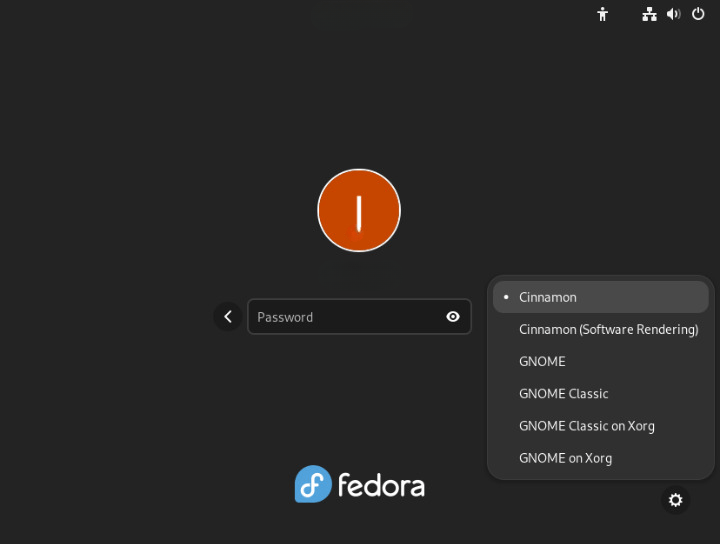How To Install Cinnamon Desktop on Fedora 38

In this tutorial, we will show you how to install Cinnamon Desktop on Fedora 38. For those of you who didn’t know, Cinnamon stands out as a feature-rich and visually appealing desktop environment for Linux systems. Its intuitive interface, customizable options, and extensive applet library make it a top choice for many users. By choosing Cinnamon on Fedora 38, you gain access to a cohesive and modern desktop experience that can enhance productivity and elevate your Linux journey.
This article assumes you have at least basic knowledge of Linux, know how to use the shell, and most importantly, you host your site on your own VPS. The installation is quite simple and assumes you are running in the root account, if not you may need to add ‘sudo‘ to the commands to get root privileges. I will show you the step-by-step installation of the Cinnamon desktop environment on a Fedora 38.
Prerequisites
- A server running one of the following operating systems: Fedora 38.
- It’s recommended that you use a fresh OS install to prevent any potential issues.
- SSH access to the server (or just open Terminal if you’re on a desktop).
- An active internet connection. You’ll need an internet connection to download the necessary packages and dependencies for the Cinnamon desktop environment.
- A
non-root sudo useror access to theroot user. We recommend acting as anon-root sudo user, however, as you can harm your system if you’re not careful when acting as the root.
Install Cinnamon Desktop on Fedora 38
Step 1. Before we can install Cinnamon on Fedora 38, it’s important to ensure that our system is up-to-date with the latest packages. This will ensure that we have access to the latest features and bug fixes and that we can install Cinnamon without any issues:
sudo dnf upgrade --refresh
Step 2. Enabling the RPM Fusion Repository.
RPM Fusion is a repository that offers a wide range of software packages not included in the default Fedora repositories. Follow these steps to enable RPM Fusion:
sudo dnf install https://download1.rpmfusion.org/free/fedora/rpmfusion-free-release-$(rpm -E %fedora).noarch.rpm https://download1.rpmfusion.org/nonfree/fedora/rpmfusion-nonfree-release-$(rpm -E %fedora).noarch.rpm
Allow the installation process to complete. This will ensure access to the necessary packages for installing Cinnamon.
Step 3. Installing Cinnamon Desktop on Fedora 38.
Once your system is up-to-date, you can install the Cinnamon desktop environment by running the following command in the terminal:
sudo dnf install @cinnamon-desktop-environment
This command will install all the necessary packages required for the Cinnamon desktop environment.
Step 4. Switch to the Cinnamon desktop environment.
After the installation is complete, you can switch to the Cinnamon desktop environment by logging out of your current session. On the login screen, click on the gear icon and select “Cinnamon” from the list of available desktop environments.

Step 5. Configuring Cinnamon on Fedora 38.
Now, let’s explore some essential configuration options to customize your Cinnamon desktop environment according to your preferences.
- A. Selecting Cinnamon as the Default Desktop Environment
To ensure Cinnamon is the default desktop environment when you log in to Fedora 38, follow these steps:
-
- Log out of your current session if you’re already logged in.
- On the login screen, click on the user account you wish to log in with.
- Next to the “Sign In” button, click on the gear icon or the “Session” dropdown menu.
- Choose “Cinnamon” from the available options.
- Enter your password and click “Sign In” to enjoy the Cinnamon experience.
B. Customizing Cinnamon
One of the strengths of Cinnamon is its high level of customization. Explore the following options to personalize your desktop environment:
-
Themes: Change the visual appearance of Cinnamon by accessing the “Themes” settings panel. Experiment with various themes to find the one that best suits your taste.
-
Applets: Enhance your workflow and access useful information with applets. Right-click on the panel and select “Add Applets” to explore the vast library of available applets.
-
Keyboard Shortcuts: Boost your productivity by creating custom keyboard shortcuts. Navigate to “Keyboard” settings and define key combinations to launch your favorite applications or perform specific actions.
Step 6. Troubleshooting and Tips.
While the installation process is generally smooth, you may encounter some issues or want to optimize your Cinnamon experience further. Here are some troubleshooting tips and additional resources to assist you:
- A. Common Issues and Solutions
- Display Resolution: If you encounter display resolution issues after installing Cinnamon, refer to the Fedora documentation or online forums for specific troubleshooting steps.
- Graphics Drivers: Ensure you have the latest graphics drivers installed on your system to maximize compatibility and performance with Cinnamon. Check the manufacturer’s website or Fedora documentation for guidance.
- B. Tips for Optimizing Cinnamon on Fedora 38
- System Resources: To optimize system resource usage, consider disabling unnecessary startup applications or services. This can be done through the Cinnamon settings or using the
systemctlcommand in the terminal. - Online Communities and Forums: Join the vibrant Fedora and Cinnamon communities online to seek advice, share experiences, and learn more about customization options and troubleshooting techniques.
Congratulations! You have successfully installed Cinnamon. Thanks for using this tutorial for installing the Cinnamon desktop environment on your Fedora 38 system. For additional help or useful information, we recommend you check the official Cinnamon website.